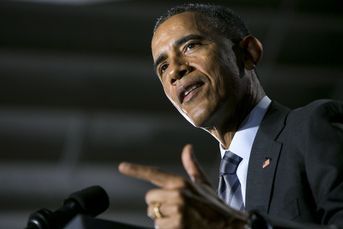Not all MLP funds created equal
Some go to extraordinary lengths to qualify for preferential treatment under the tax code.
There are exchange-traded funds, and open- and closed-end mutual funds that invest in master limited partnerships.
All are regulated investment companies, but most flunk the tax test for funds and wind up being regular tax-paying corporations. That is because according to Internal Revenue Code Section 851(b)(3)(B), to qualify under the tax test the fund can’t own more than 25% in MLPs.
But there is a small minority of MLP funds that strive to pass the tax test while still giving the desired exposure to MLPs. I found nine MLP funds that try to avoid exceeding the 25% threshold.
Two are ETFs, two are closed-end funds, and five are traditional open-end mutual funds. All issue 1099s, not K-1s.
“We will keep at least 80% of our assets in MLP-related securities,” reads the prospectus for one of these funds.
So how do they pass the no-more-than-25%-MLP test while keeping at least 80% in MLPs? Of course, they put 25% directly in MLPs; however what they do with the other 75% is handled quite differently from fund to fund.
Almost all the MLP funds invest in MLP-related corporate issuers in the 75% bucket. These securities aren’t partnerships, and thus are eligible for the 75% bucket (and individual retirement accounts).
Using derivatives
Kinder Morgan has KMI and the I-units KMR. Enbridge also has I-units. There are also shares of the corporate general partners of energy partnerships that qualify to be in the non-MLP bucket.
Some use derivatives — including listed exchange-traded notes or over-the-counter contracts such as swaps — to get MLP exposure. The two closed-end funds use subsidiary “blocker” corporations to boost their allowed MLP holdings.
As an example, the Tortoise MLP & Pipeline Investor (TORTX) open-end fund holds its 25% in MLPs along with almost 9% in KMR I-units, 16% in Canadian pipelines companies and the rest in common stocks comprising mostly natural-gas companies and a few utilities.
The non-MLP basket of the open-end FAMCO MLP & Energy Income Fund (INFRX) has 29% of the total portfolio in bonds of energy companies, 15% in Kinder Morgan and Enbridge non-MLP entities and 7% in utilities.
First Trust North American Energy Infrastructure Fund (EMLP) as the first MLP ETF. This fund holds 24% of its portfolio in Kinder Morgan and Enbridge non-MLP companies and 40% in utility common stocks.
Eagle MLP Strategy Fund (EGLAX) is an open-end mutual fund that has 15% in Kinder Morgan and Enbridge non-MLP related companies, 17% in general partnerships and 16.5% invested in various ETNs.
Salient MLP & Infrastructure Fund (SMF) is a closed-end fund that has 24% in MLPs, 33% in non-MLP affiliates and 25% in a wholly owned subsidiary that owns MLPs.
A recent Internal Revenue Service proposal is likely to curtail the ability to utilize a wholly owned subsidiary to increase MLP holdings.
Proposed Regulation 114122-12 observes that some MLP funds, in order to get more MLP exposure in the 75% basket, have been creating and investing in subsidiary corporations. These wholly owned subsidiaries then invest in MLPs.
It was thought that the subsidiary would act as a “blocker” and that the IRS would “see” only the subsidiary corporation as a holding for the diversification test rather than the subsidiary’s MLP investments. Ironically, the annual report’s list of portfolio holdings didn’t show the stock of the subsidiary but rather the subsidiary’s MLPs sitting in the portfolio like anything else.
The subsidiary’s holdings were denoted only by a footnote or asterisk. The regulation, when final, may allow some grandfathering of existing positions, but the government is usually reluctant to create an unequal playing field or reward those who moved fast.
I wouldn’t be sorry to see the use of the subsidiary be limited because it has a tax cost connected to it as this subsidiary is a tax-paying corporation.
It seems that the MLP fund trying to escape a corporate level of tax by passing the 25% test is purposely creating and investing in an entity that will incur a corporate level of tax. This creates tax drag on the 25% of the fund invested in the subsidiary, similar to what happens when a competing MLP fund flunks the 25% test.
Oh what a tangled web we weave …
Robert N. Gordon ([email protected]) is chief executive of Twenty-First Securities Corp. and an adjunct professor at New York University’s Leonard N. Stern School of Business.
Learn more about reprints and licensing for this article.





